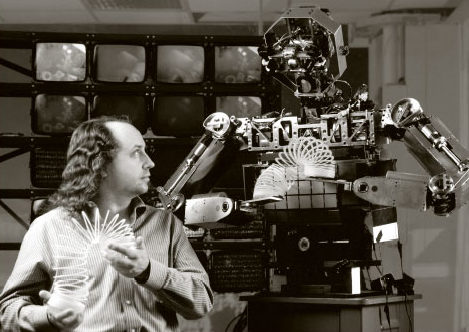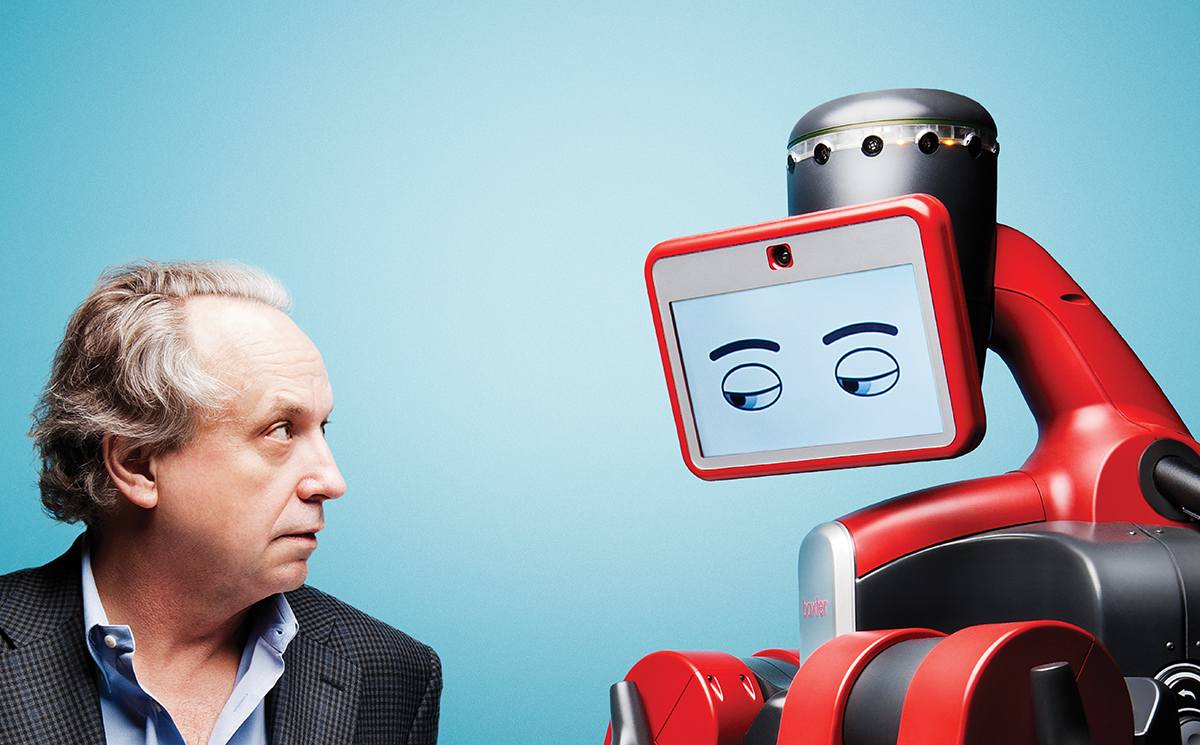Speaking of psychodrama, the theatrical therapy is mentioned briefly in John Markoff’s Machines of Loving Grace, in a passage about the nascent career of of roboticist Rodney Brooks, who became widely known from the Errol Morris documentary Fast, Cheap & Out of Control. Even though the connection in this case is glancing, it’s a good metaphor for how low- and high-tech attempts to understand consciousness overlap historically.
The passage:
Hans Moravec, an eccentric young graduate student, was camping in the attic of SAIL, while working on the Stanford Cart, an early four-wheeled mobile robot. A sauna had been installed in the basement, and psychodrama groups shared a lab space in the evenings. Available computer terminals displayed the message “Take me, I’m yours.” “The Prancing Pony”–a fictional wayfarer’s inn in Tolkien’s Lord of the Rings–was a mainframe-connected vending machine selling food suitable for discerning hackers. Visitors were greeted in a small lobby decorated with an ungainly “You Are Here” mural echoing the famous Leo Steinberg New Yorker cover depicting a relativistic view of the most important place in the United States. The SAIL map was based on a simple view of the laboratory and the Stanford campus, but lots of people had added their own perspectives to the map, ranging from placing the visitor at the center of the human brain to placing the laboratory near an obscure star somewhere out on the arm of an average-sized spiral galaxy.
It provided a captivating welcome for Rodney Brooks, another new Stanford graduate student. A math prodigy from Adelaide, Australia, raised by working-class parents, Brooks had grown up far from the can-do hacker culture in the United States. However, in 1969–along with millions of others around the world–he saw Kubrick’s 2001: A Space Odyssey. Like Jerry Kaplan, Brooks was not inspired to train like an astronaut but was instead seduced by HAL, the paranoid (or perhaps justifiably suspicious) AI.
Brooks puzzled about how he might create his own AI, and arriving at college, he had his first opportunity. On Sundays he had solo access to the school’s mainframe for the entire day. There, he created his own AI-oriented programming language and designed an interactive interface on the mainframe display. Brooks now went to writing theorem proofs, thus unwittingly working in the formal, McCarthy-inspired artificial intelligence tradition. Building an artificial intelligence was what he wanted to do with his life.•
Tags: John Markoff, Rodney Brooks


